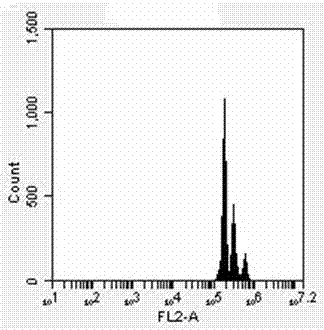Preservation method of rubber leaves
A preservation method and technology of rubber leaves, which are applied in the preservation of plants, botanical equipment and methods, applications, etc., can solve the problems of high price, obstacles to breeding, and inability to be used for detection, and achieve simple and easy operation steps and reduce Round-trip cost, simple effect of facility requirements
- Summary
- Abstract
- Description
- Claims
- Application Information
AI Technical Summary
Problems solved by technology
Method used
Image
Examples
Embodiment 1
[0027] In this example, leaf samples were collected, preserved, transported and tested for individual rubber trees to be tested in four rubber tree planting areas in Gengma, Mangshi, Mojiang and Lvchun in Yunnan.
[0028] Include the following steps:
[0029] Step (1), leaf collection: collect the light green tender leaves of the rubber tree, keep the leaflet petiole, and collect from each individual plant to be tested.
[0030] Step (2), paraffin waxing: within 1.5 minutes after collection, wipe off the latex flowing out from the lower end of the petiole with absorbent paper, hold the upper end of the petiole, dip 1 mm of the lower end of the petiole into the melted paraffin for 1 second, take it out for 2 minutes and wait for paraffin wax solidification.
[0031] Step (3), bundling: Take 3 paraffin-coated leaves as a bundle, wrap the petiole with dry cotton gauze with a width of 1.5 cm for 3 turns, wrap the gauze around each bundle of leaves, and insert the petiole into the...
Embodiment 2
[0039] Leaf samples were collected, preserved, transported and tested for individual rubber trees to be tested in three rubber tree planting areas in Gengma, Mangshi and Mojiang in Yunnan.
[0040] Include the following steps:
[0041] Step (1), leaf collection: collect the light green tender leaves of the rubber tree, keep the leaflet petiole, and collect from each individual plant to be tested.
[0042]Step (2), paraffin waxing: within 2 minutes after collection, wipe off the latex flowing out of the lower end of the petiole with absorbent paper, hold the upper end of the petiole, dip the lower end of the petiole 1mm into the melted paraffin for 0.5 s, take it out for 2 minutes and wait for the paraffin to solidify.
[0043] Step (3), bundling: Take 3 paraffin-coated leaves as a bundle, wrap the petiole with a dry cotton gauze with a width of 1.5 cm 5 times, wrap the gauze around each bundle of leaves, and insert the petiole into the EP tube; the EP tube is 2.5ml EP tube wi...
PUM
 Login to View More
Login to View More Abstract
Description
Claims
Application Information
 Login to View More
Login to View More - Generate Ideas
- Intellectual Property
- Life Sciences
- Materials
- Tech Scout
- Unparalleled Data Quality
- Higher Quality Content
- 60% Fewer Hallucinations
Browse by: Latest US Patents, China's latest patents, Technical Efficacy Thesaurus, Application Domain, Technology Topic, Popular Technical Reports.
© 2025 PatSnap. All rights reserved.Legal|Privacy policy|Modern Slavery Act Transparency Statement|Sitemap|About US| Contact US: help@patsnap.com


